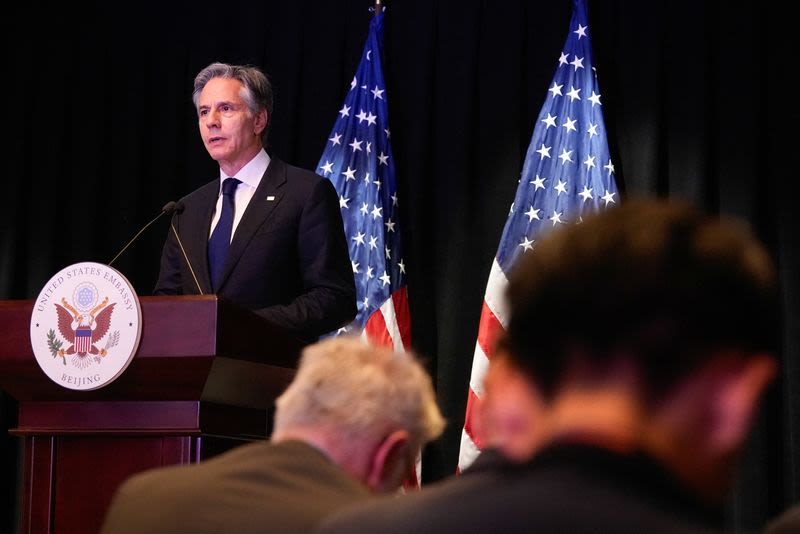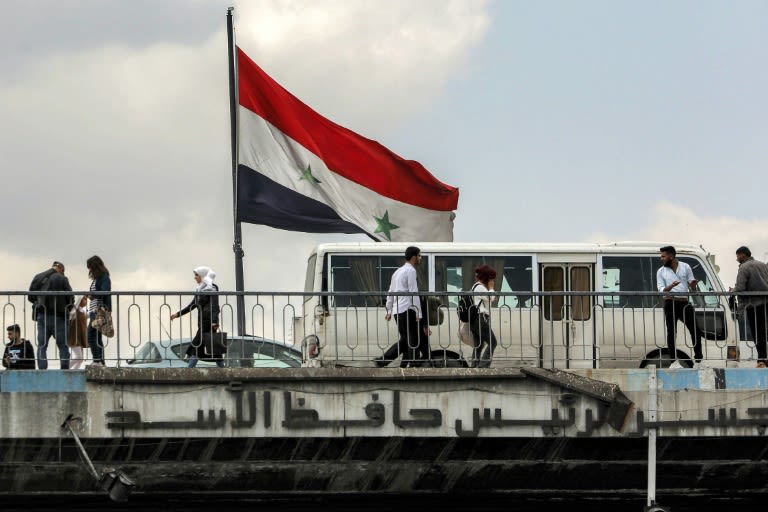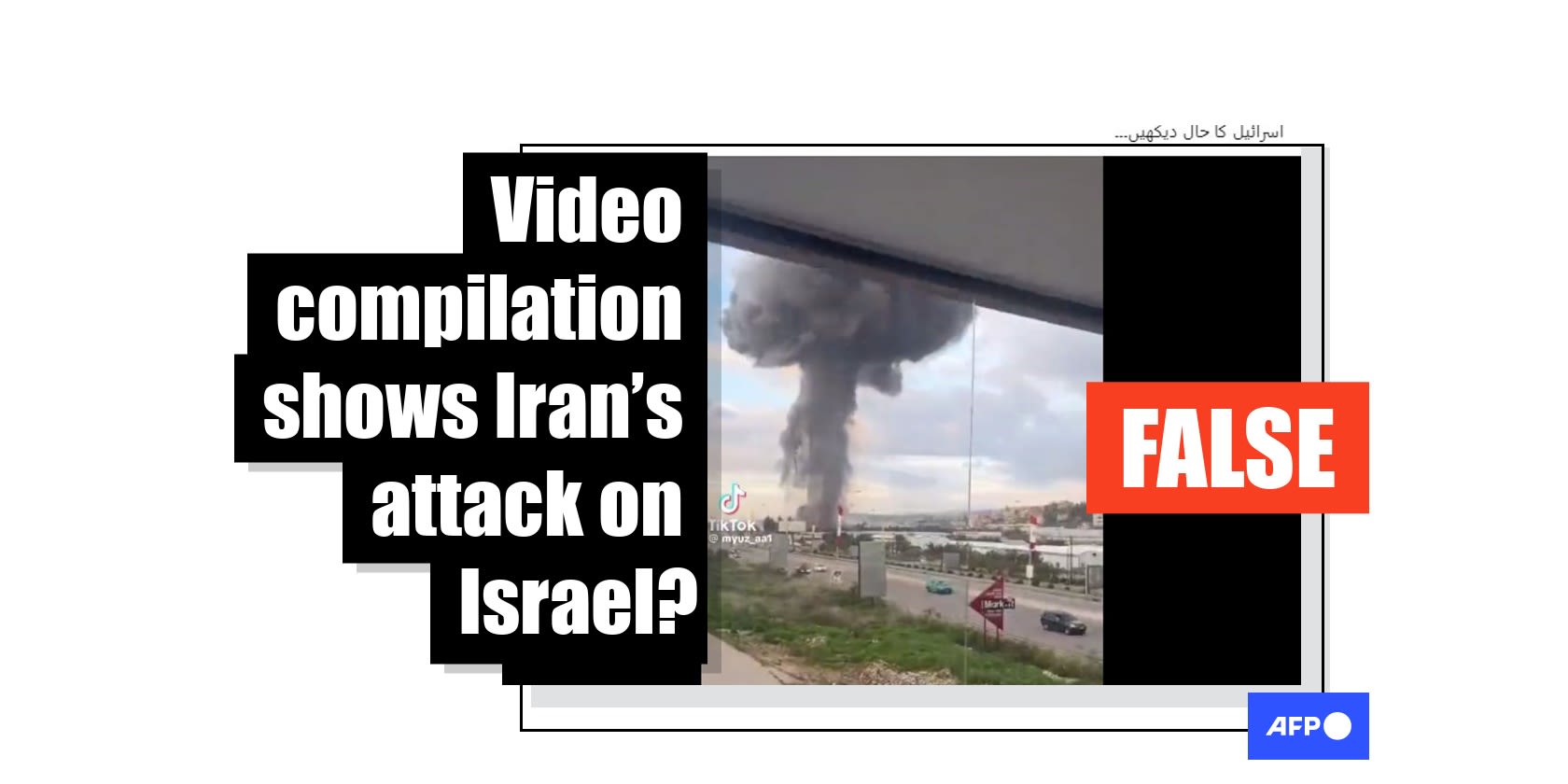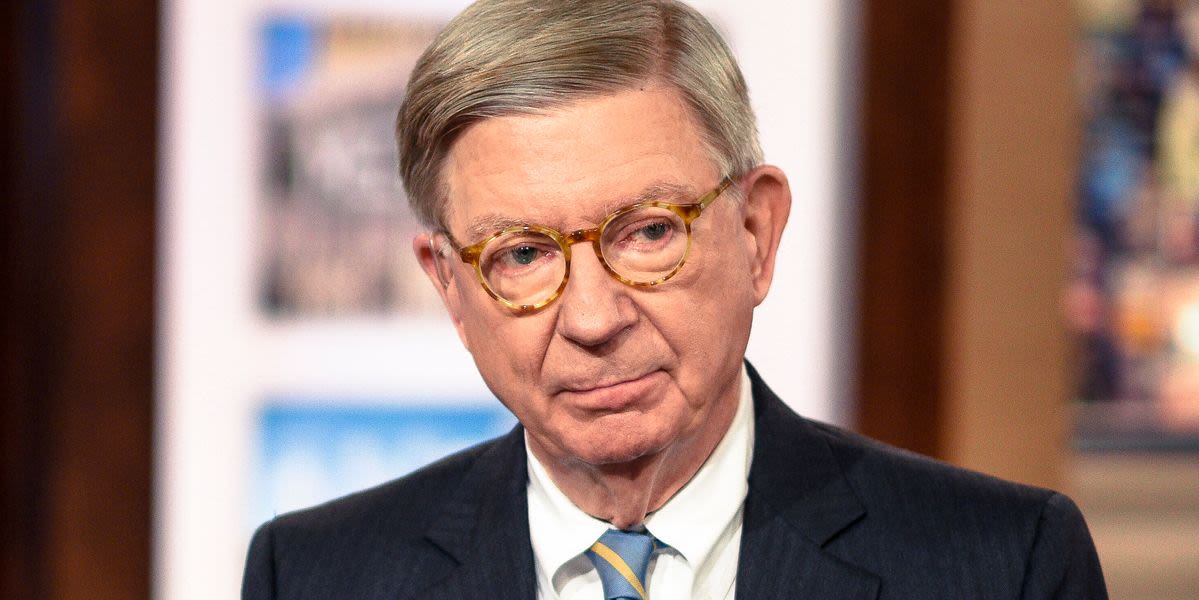Search results
News about Iran, nuclear program, nuclear site
News about Syria, antisemitism, Blinken
News about Iran, Israel, missile attack
Also in the news
Tehran (/ t ɛəˈr æ n,-ˈ r ɑː n, ˌ t eɪ-/; Persian: تهران Tehrân [tehˈɾɒːn] ⓘ) is the capital and largest city of Iran and also the largest city in Tehran Province. It also serves as the capital of the province, county and the Central District.
- List of Expressways in Tehran
Expressways in Tehran Kordestan Expressway interchange with...
- Imam Khomeini International Airport
Imam Khomeini International Airport (IATA: IKA, ICAO: OIIE)...
- Harvard Film Archive
The Carpenter Center, home of the Harvard Film Archive. The...
- Tochal
Tochal (Persian: توچال Točāl), is a mountain and ski resort...
- List of Largest Cities of Iran
Most internal migrants have settled near the cities of...
- Iran Mall
The Iran Mall (Persian: ایران مال) is the largest shopping...
- Timeline
The following is a timeline of the history of the city of...
- List of Expressways in Tehran
- Overview
- Character of the city
- City site
- Climate
- City layout
- People
- Economy
- Manufacturing, finance, and other services
- Transportation
Tehrān, the capital city of Iran and the centre of the province (ostān) of Tehrān, located in north-central Iran at the foot of the Elburz mountain range. Since its establishment as the capital city by Āghā Moḥammad Khān more than 200 years ago, Tehrān has grown from a small city to a major metropolis: situated in an urban region of 14 million inha...
With a dramatic topography reflective of its proximity to the highest peak in the country, Tehrān is Iran’s gateway to the outside world. Tehrān’s image abroad was strongly influenced by the Iranian Revolution of the late 1970s. In the last two decades of the 20th century, television screens and newspaper articles around the world portrayed Tehrān ...
The centre of the city is on latitude 35°41′ N and longitude 51°26′ E. Tehrān is located on the steep southern slopes of the Elburz mountain range, which traces an arc along the coast of the Caspian Sea in northern Iran. Its highest peak, Mount Damāvand (Demavend), has an elevation of more than 18,400 feet (5,600 metres) and is visible from Tehrān on clear days. The highest point in Iran, Damāvand is also higher than any other peak among the summits to its west in Asia and Europe. Figuring prominently in Persian legend, Damāvand holds for Iranians much the same significance as Mount Fuji offers the Japanese. The symbolic significance of this site and its location on the historic east-west trade route (Silk Road) have ensured that this area has been the site of significant settlement for several millennia. Towchāl ridge (12,904 feet [3,933 metres]), the site of a popular ski and recreation site linked to the city by a series of cable cars, dominates the city from the north, while the city’s southern reaches extend toward Kavīr, a desert located in north-central Iran.
The northernmost limits of the city stand at about 5,600 feet (1,700 metres) above sea level and the southernmost limits about 3,600 feet (1,100 metres). There is a difference of about 2,000 feet (600 metres) between the northern heights and the southern edges of the city, some 19 miles (30 km) away. This dramatic difference in height and Tehrān’s location between mountains and desert have had significant impacts on the social and physical characteristics of the city.
Britannica Quiz
50 Capital Cities at Random Quiz
Tehrān has a hot, arid climate shared by many parts of central Iran. Although the summer is very long, the city enjoys four distinct seasons, and the Elburz mountain range prevents the humidity of the Caspian Sea in the north from reaching the city. The annual average temperature in Tehrān is 63 °F (17 °C), with an average annual high of 73 °F (23 °C) and annual lows averaging about 53 °F (12 °C). Extreme temperatures can reach a maximum of 109 °F (43 °C) in the summer and a minimum of 5 °F (−15 °C) in the winter. The city has an average annual precipitation of about 10 inches (230 mm) and experiences an average of 48 days of frost per year.
Tehrān’s growing environmental challenges include air, water, land, and noise pollution. Motor vehicles, household fuel, and a concentration of industries generate atmospheric pollution, which cannot be cleared away, because of the effect of surrounding mountains and limited precipitation. For two-thirds of the year, pollutants caused by fossil fuels are trapped inside a dome of hot air. The north winds are not strong enough to mobilize the polluted air, and the major winds, which blow from the west, south, and southeast, bring with them more pollution from industrial production in those areas.
Exclusive academic rate for students! Save 67% on Britannica Premium.
Learn More
Tehrān’s urban layout is marked by a clear core-periphery distinction. The old core forms a small part of the city, where a number of older buildings and institutions can be found. Moṭaharī (formerly Sepahsālār) mosque and seminary, with its domes and minarets, was the one of the most impressive buildings of the city in the 19th century. The central bazaar, with miles of roofed streets, domed trading halls, mosques, and caravanserais, remains a tourist attraction as well as a centre of economic activity. Near the bazaar and the city’s central park, the site of the old royal citadel is now occupied by many central government buildings. Most of the business activities and services are located in the old core and its northward expansion, developed mainly between the 1860s and the 1940s. The city core is surrounded by residential areas and growing suburbs. Older residential areas are built in the traditional style of winding narrow streets and cul-de-sacs leading to one- or two-story buildings around a central courtyard; previously inhabited by a single family, some of the larger homes in these older residential areas are now under the combined pressure of multiple occupation by low-income and migrant households, planning blight, and the expansion of commercial activity. By contrast, newer residential areas consist of wider, straight streets and outward-looking buildings of various heights with walled courtyards. Despite a rich architectural heritage, a number of historical buildings have suffered the effects of construction and expansion. Only a few buildings were listed for conservation, though at the end of the 20th century some 5,000 buildings of historical and architectural value had been identified in the Bāzār (bazaar) and ʿŪdlājān (Oudlajan) districts alone.
Farther out, especially toward the south and west, the city’s expansion has engulfed villages and satellite towns, and a north-south divide in the city structure dictates the character of these residential areas. Along with green spaces, tree-lined streets, and a more moderate climate, the largely middle- and upper-income groups that inhabit the north also enjoy larger residences, lower population densities divided into smaller households, higher land value, and greater access to quality services and facilities. Against the background of high mountains, the dominant features of the townscape in the north are modern high-rise buildings, resulting in a more diverse skyline. Distinguished from the south by its range of physical and social advantages, the north is on the whole prone to fewer of the problems prevalent in the south—problems associated with flooding, inadequate systems of sewage management, and air pollution.
As the country’s administrative centre and its largest job market, Tehrān has continuously grown in size, housing about one-tenth of Iran’s population in the early 21st century. The city’s growth rate peaked between the mid-1950s and ’60s. As the city’s growth rate slowed down, the suburbs grew at a faster pace until the mid-1980s, when their growth rate also started to slow down.
Tehrān’s slowed growth, owing in part to a general trend of suburbanization, resulted in a physical deterioration and decreased population in the city’s central areas. The expansion of businesses into residential areas, an increase in traffic regulations, changes to the city’s administrative boundaries, a buoyant development industry, the availability of land and cheap fuel, rising social polarization, and citizens’ expectation for higher standards of living all combined to encourage a process of suburbanization that precipitated the decline in the physical fabric of the city’s centremost areas. By comparison, the slowdown in the metropolitan region’s growth is due to a decline of natural growth rate and of immigration. Birth rates have generally slowed, apart from a brief period in the early 1980s at the height of revolution and war. Immigration to Tehrān has slowed due to the rising cost of living, mounting congestion problems and higher population density, restrictions on industrial activities, unemployment and other economic problems, and the growth of outlying suburbs and of other urban areas in Iran.
On the whole, Tehrān is very young; at the end of the 20th century, the population’s mean age was about 31 years. This trend is especially the case in the peripheral areas, particularly the poorer neighbourhoods in the south, where larger families of recent immigrants from rural areas live. The peripheral areas also show a larger proportion of males, mainly men from other provinces or neighbouring countries in search of work in the city.
At the end of the 20th century, more than three-fifths of Iranians who changed their place of residence chose to move to the capital. Immigrants arrived from across the country, particularly from the historically wealthier and more densely populated central and northern regions. Instability in neighbouring countries during the 1980s and ’90s, including Iraq’s invasions, the occupation and war in Afghanistan, and the collapse of the Soviet Union, also intensified immigration to the city. Although by the beginning of the 21st century the majority of Tehrānis had been born in the city, a great proportion of them had roots in other parts of Iran, mirroring a multiethnic and multilingual country in which Persians form a majority alongside sizable ethnic minorities of Azerbaijanis, Kurds, Turkmen, Arabs, Lurs, and Baloch.
The distribution of faith among the population of Tehrān roughly reflects that of Iran as a whole. Tehrān’s inhabitants are primarily Muslim, the majority of whom are Shiʿi, with additional religious communities of Christian, Jewish, and Zoroastrian minorities.
At the beginning of the 21st century, the nuclear family had largely replaced the extended family. The economic necessity of large extended families has decreased as the economic base shifted from agriculture in favour of industry and services. Older generations frequently remained behind as the mostly younger migrant families moved to the cities. The emphasis on the nuclear family was also underscored by governmental measures such as housing policy and the wartime ration book and by high land prices that encouraged the development of smaller dwelling units. With the resulting shift toward the nuclear family, the average size of the family decreased to an average of about four members. Additional changes to the traditional family structure included an increase in the average age of first marriage and a rise in the divorce rate. Family and kinship remain important, however, particularly as loci of socialization and as support networks that help individuals cope with various economic and social hardships.
Tehrān is the economic centre of Iran. Despite numerous attempts to diversify the country’s economy, it is dominated by the oil industry, controlled from Tehrān by the national government. At the beginning of the 21st century, oil accounted for four-fifths of Iran’s foreign exchange income. The country owned about one-tenth of the world reserves of crude oil, and its natural gas reserves were exceeded only by those of the former U.S.S.R.
Several decades of continuous economic growth came to a halt in the late 1970s and ’80s with the advent of a revolution that attempted radical economic change (see Iran: The Iranian Revolution, 1978–79), eight years of fighting with Iraq (see Iran-Iraq War), falling oil prices, disinvestment, high inflation, and the loss of capital and skilled labour. The overall economic outlook, improved by the liberal economic reforms that followed in the 1990s, better political and economic relations with the West, attraction of capital through foreign loans, and rising oil prices, enabled Iran to try to find a path back to the global marketplace.
As earnings from the oil industry were circulated in the economy, they often supported unproductive activities and a large public sector, which grew dramatically after the revolutionary nationalization of banks and many large private firms. Before the wave of privatization that became prominent in the 1990s, nearly one-half of working Tehrānis were employed by the government. Together with the services that supported these public-sector workers, the majority of the city’s population was dependent on public-sector resources.
Employment trends largely indicate that men are the primary economic providers. Tehrān’s youth have had difficulties finding economic opportunities, and although most women have traditionally not worked outside the home, an increasing proportion have begun to seek participation in the economy through paid employment outside the home. If the elderly cannot work to support themselves, they must be supported by their children. The kinship network often serves as the primary support structure in the absence of sufficient social welfare provisions. Street vending, windshield cleaning, and other forms of casual or informal employment are frequently concealed by official unemployment figures.
At the end of the 20th century, more than one-third of all jobs in Tehrān were related to social and personal services, about one-fifth were in manufacturing, and about one-sixth were in sales. Transport, construction, and financial services each employed smaller proportions of the workforce. Overall, services account for almost two-thirds of the w...
Owing to Tehrān’s congestion, movement across the city can pose a significant challenge. A new network of underground trains, under construction for more than 20 years and disrupted by revolution, war, and lack of funding, mobilized its first lines at the beginning of the 21st century. The construction of a network of highways in the city was resum...
- Ali Madanipour
Tehran (Persian: تهران), is the capital of Iran and the center of Tehran Province. The origin of the name Tehran is unknown. The word Tehran means warm mountain slope. Tehran is at the foot of the Alborz mountain range. Tehran is the 32nd National Capital of Iran. It is the largest city in the Middle East & Western Asia.
City origins. The first time Tehrān is mentioned in historical accounts is in an 11th-century chronicle in which it is described as a small village north of Rayy (Ray). Archaeological remains from the city of Rayy, once known as Raghā and a major city throughout history, show signs of settlement on the site as long ago as 6000 bce.
Tehran is the most populous city in Iran and Western Asia, and has the second-largest metropolitan area in the Middle East, after Cairo. It is ranked 24th in the world by metropolitan area population. Archaeological remains from the ancient city of Ray suggest that settlement in Tehran dates back over 6,000 years.
23 hours ago · Category: Geography & Travel. Supreme Political/Religious Authority: Leader: Ayatollah Sayyed Ali Khamenei. Head Of State And Government: President: Ebrahim Raisi. Capital: Tehrān. Population: (2024 est.) 87,529,000. Currency Exchange Rate: 1 USD equals 42056.277 Iranian rial. Recent News. Apr. 25, 2024, 12:11 PM ET (AP)
People also ask
What is the history of Tehran?
What is Tehran known for?
What is the capital city of Iran?
Why is Tehran the capital of Iran?




